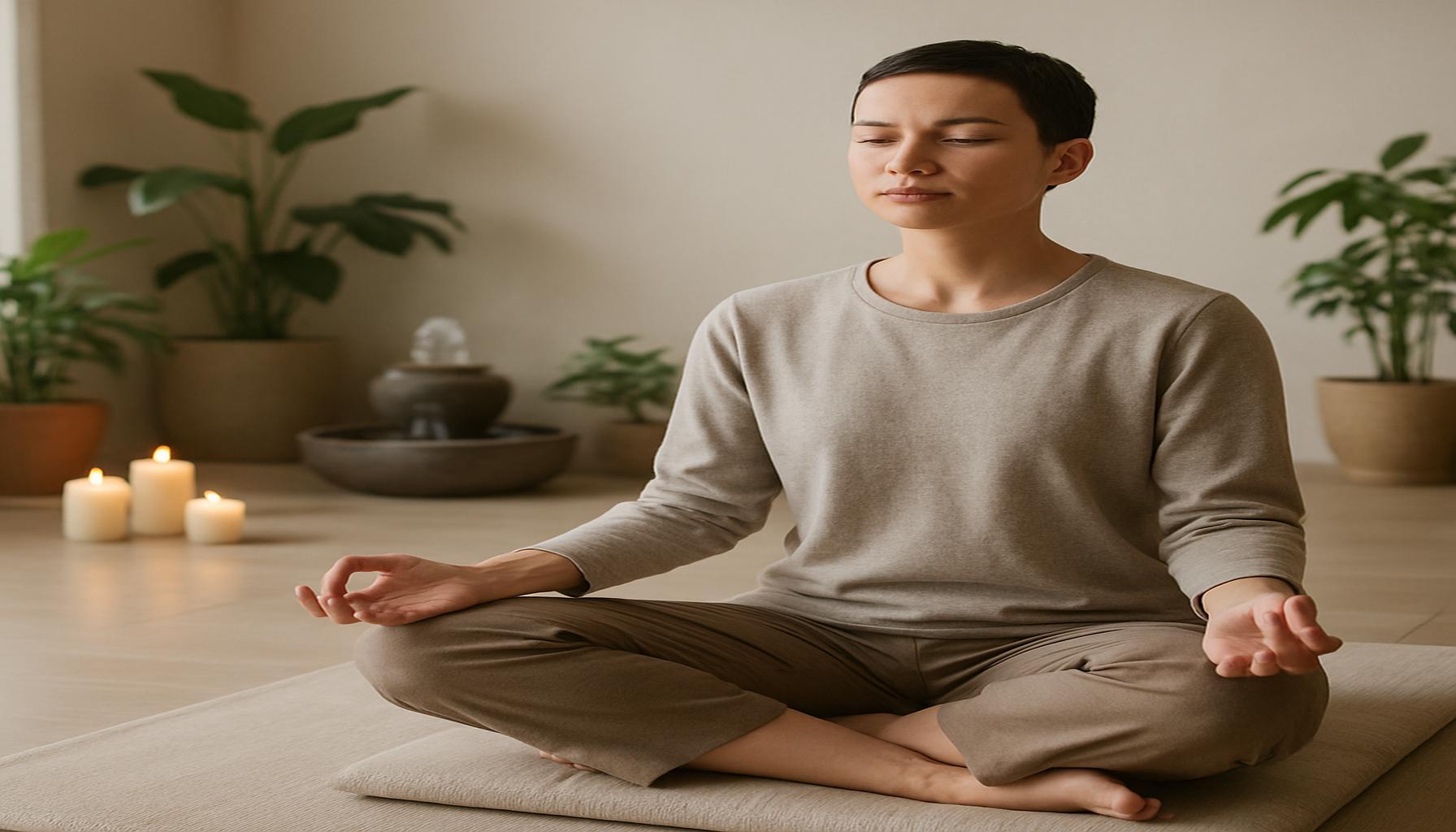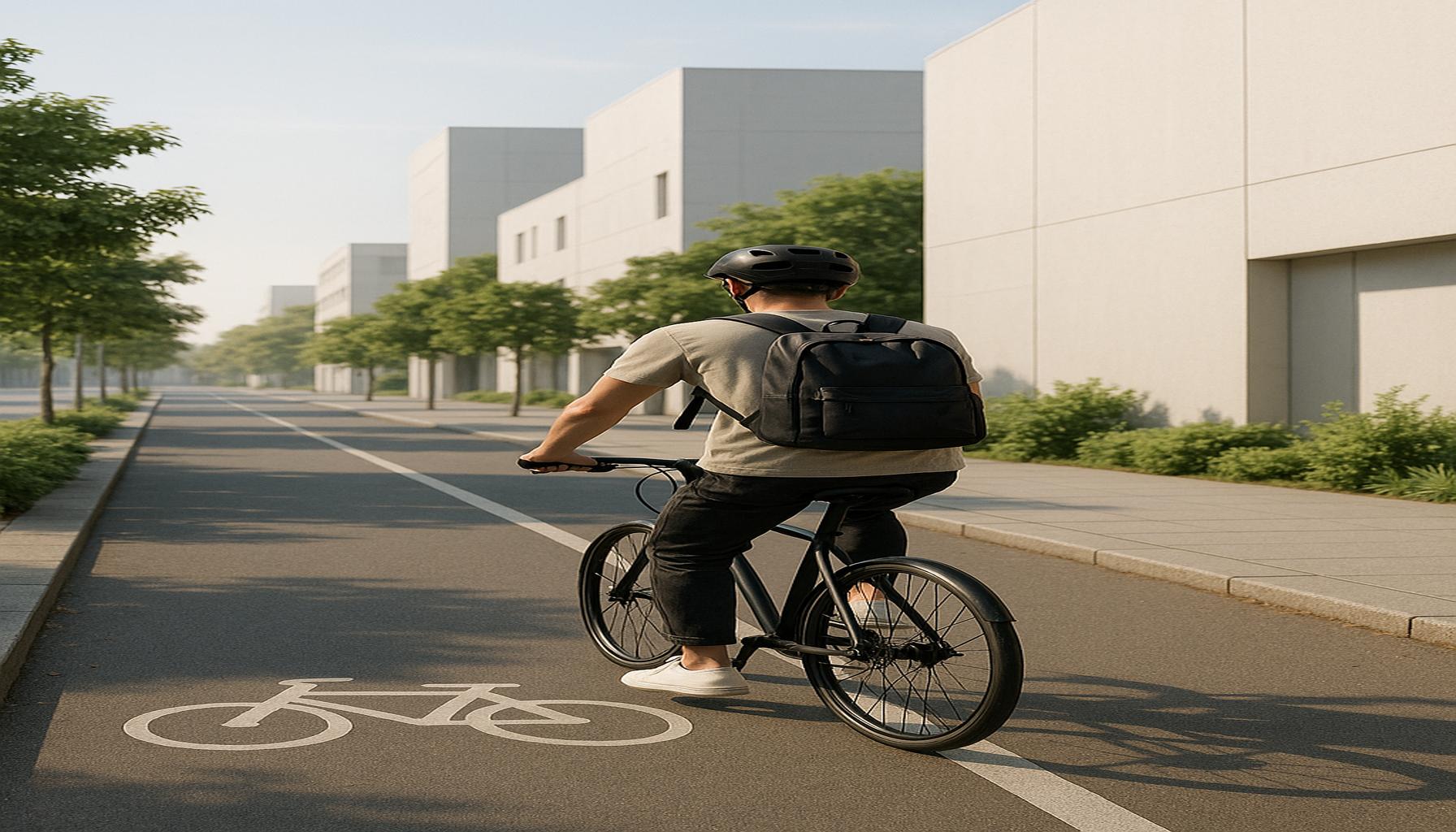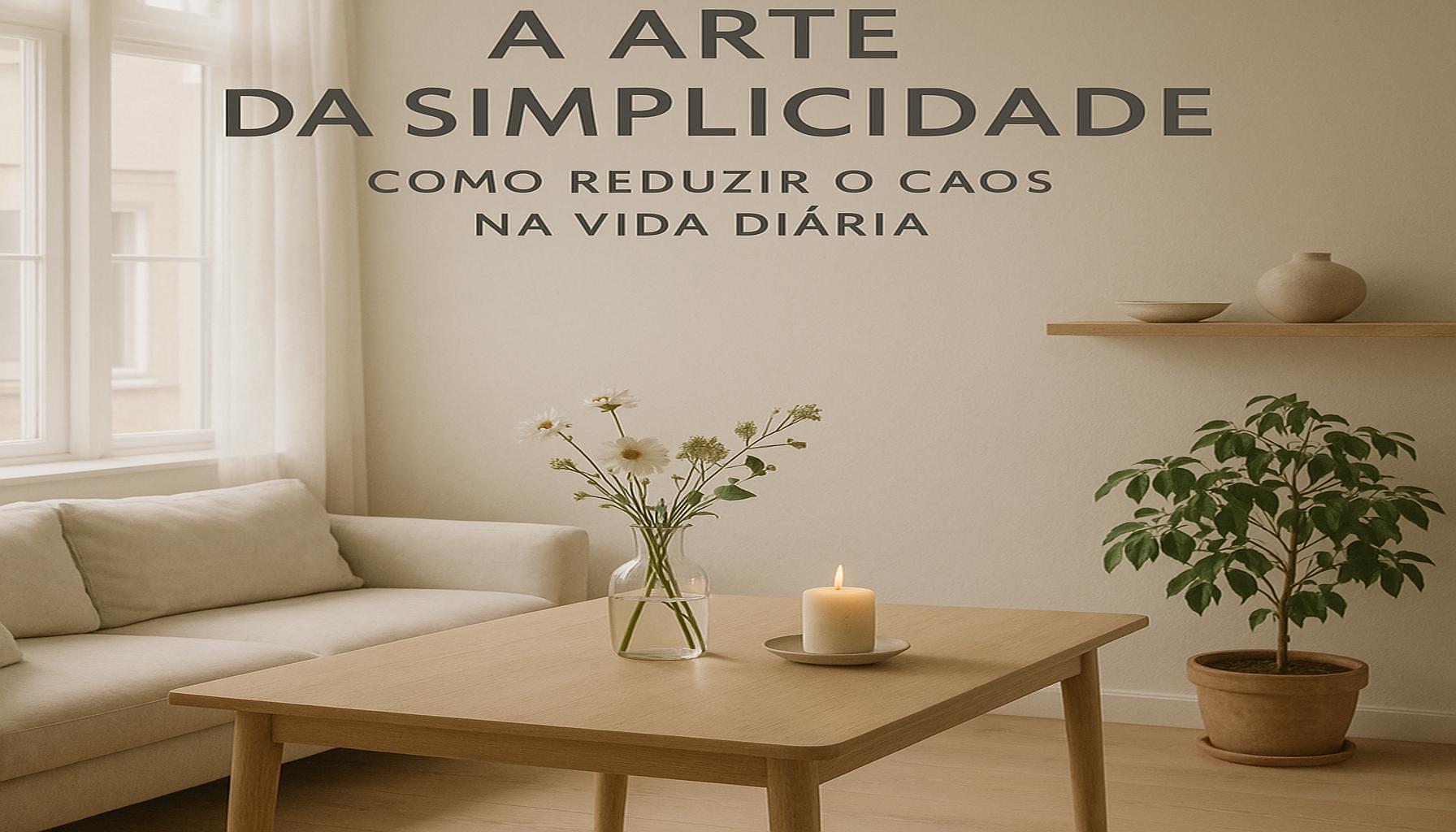Simplicity and Mindfulness: Meditation Practices to Find Clarity in a Hasty World

The Quest for Clarity in a Chaotic World
In our modern age, filled with an overwhelming barrage of notifications, tasks, and constant connectivity, finding moments of clarity often feels akin to searching for a needle in a haystack. The relentless demands of work, family obligations, and the incessant scroll of social media can clutter our minds, leading to feelings of anxiety and disorientation. This is where the transformative power of meditation practices comes into play, offering a lifeline to those seeking to reclaim their inner peace.
Research has shown that integrating mindfulness practices into our daily routine can significantly enhance mental clarity. For instance, a study published in the journal *Psychological Science* found that participants who engaged in mindfulness meditation experienced improved attention spans and greater cognitive flexibility. This suggests that meditation isn’t merely a momentary escape; it fundamentally reshapes the way we engage with our thoughts and surroundings.
Benefits of Mindfulness
Embracing simplicity and mindfulness offers a plethora of benefits that extend beyond mere relaxation. Consider the following:
- Enhanced Focus: Meditation has been linked to improved concentration and cognitive function. By training the mind to return to a single point of focus—such as the breath—individuals can bolster their ability to concentrate on tasks, thereby boosting productivity levels during work hours.
- Stress Reduction: Numerous studies highlight how regular meditation can reduce levels of the stress hormone cortisol. This significant reduction aids in managing anxiety, which is particularly beneficial in high-pressure environments such as workplaces or during challenging life transitions.
- Greater Self-Awareness: Mindfulness practices encourage introspection, fostering a deeper understanding of one’s emotions and thought patterns. This heightened self-awareness can lead to informed decision-making and personal growth, impacting not only the individual but also their relationships with others.
Techniques to Explore
Integrating meditation techniques into daily life can be remarkably simple yet profoundly impactful. Techniques such as breath awareness involve focusing solely on the rhythm of your breath, which anchors you in the present moment and can be practiced anywhere—from a quiet room to a bustling café. Guided imagery uses visualization to enhance relaxation and mental clarity, often leading you to peaceful scenarios, aiding in emotional processing. Additionally, walking meditations combine movement with mindfulness, allowing you to connect with your environment while cultivating inner peace.
By incorporating these practices into our routines, we unlock pathways to a clearer and more centered existence. This exploration of mindfulness not only transforms chaotic lives but also invites us to experience life more fully and authentically. As we journey deeper into these techniques, we equip ourselves with powerful tools capable of altering our perspective and enriching our daily experiences.
DISCOVER MORE: Click here to simplify your digital life
Understanding Mindfulness: Key Principles and Practices
To explore the quieter realms of the mind amidst a cacophony of everyday life, it is essential to understand the fundamental principles of mindfulness. This age-old practice, rooted in various contemplative traditions, centers on the art of being present. By consciously shifting our attention away from distractions and toward the current moment, we cultivate an awareness that can profoundly influence our thought processes and emotional responses. The beauty of mindfulness lies in its accessibility; it can be adopted by anyone, anywhere, regardless of prior experience.
One of the cornerstones of mindfulness is the practice of non-judgmental awareness. This means observing thoughts and feelings without labeling them as good or bad. When we can recognize our thoughts without criticism, we create a space for greater understanding and acceptance. This practice is akin to stepping back and watching the thoughts flow by, like clouds in the sky, preventing us from getting tangled in the rapid currents of worry or fear.
Common Meditation Practices for Clarity
While there are various mindfulness techniques, a few standout practices can significantly enhance clarity in a world that often feels hasty:
- Mindful Breathing: Focusing on the natural rhythm of your breath serves as a grounding exercise. By inhaling deeply and exhaling slowly, individuals can create a calming effect that refocuses attention. This technique can be practiced in as little as five minutes throughout the day.
- Body Scan meditation: This practice involves mentally scanning your body from head to toe, noticing sensations without judgment. It encourages relaxation and an acute awareness of physical tension, which can be particularly effective for those who carry stress in their bodies.
- Journaling: Engaging in expressive writing can serve as a form of meditation that allows for clarity of thought. By putting pen to paper, individuals can process their experiences, emotions, and ideas, creating a tangible record of their internal landscape.
- Mindful Eating: This technique encourages individuals to focus on the experience of eating, such as the taste, texture, and sensation of food. Through this practice, you can transform mealtime into a moment of mindfulness, fostering appreciation and awareness.
Through these varied practices, individuals can explore mindfulness in a way that resonates with their unique lifestyles. Each technique offers insights into navigating personal challenges, ultimately steering the mind towards clarity and calmness.
As we delve deeper into the world of mindfulness, it becomes clear that the power to find clarity in our chaotic lives rests within each of us. By embracing these meditation techniques, we can cultivate a state of mindfulness that elevates our everyday experiences, making them richer and more fulfilling.
The practice of meditation is not merely a means of relaxation; it is a profound journey into the self that fosters clarity and insight. In our fast-paced society, where distractions are abundant and information is overwhelming, cultivating simplicity through mindfulness techniques can transform our daily experiences. One key aspect of meditation is its ability to anchor the mind in the present moment, allowing practitioners to escape the torrent of thoughts that often cloud their judgment. This anchoring helps in recognizing and appreciating the beauty of simple, everyday moments, which are easily overlooked in the rush of life.
Moreover, meditation aids in reducing stress, which is a significant contributor to feelings of chaos. Techniques such as deep breathing, body scanning, and focused attention can effectively lower stress levels, promoting a serene mental state. Regular practice encourages a shift from a reactive mindset to a more proactive approach, fostering emotional resilience and enhancing overall well-being. The ripple effect of this practice is tremendous; as individuals cultivate a clearer mind, they begin to approach their daily tasks with greater focus and intent, leading to improved productivity and creativity.
As we explore various meditation techniques, it is essential to remember that simplicity is at the core of mindfulness. Practices like guided imagery and mantra meditation provide structured yet straightforward ways to engage with our thoughts without judgment. In doing so, we learn to observe our internal landscape with curiosity rather than criticism, paving the way for profound personal growth. Embracing these practices not only enhances our clarity but also fosters a deeper connection with ourselves and the world around us.
| Category | Benefits |
|---|---|
| Mindfulness Techniques | Promote present-moment awareness, reducing distractions. |
| Emotional Resilience | Enhances the ability to cope with stress and challenges. |
Indeed, the theme of Simplicity and Mindfulness reveals how intentionally slowing down can regenerate our focus and clarity in a hurried world. By embracing these meditation practices, individuals can uncover a well of peace and intention that profoundly enhances their lives.
DISCOVER MORE: Click here to enhance your productivity
Integrating Mindfulness into Daily Life
In a culture that often glorifies busyness and multitasking, integrating mindfulness into daily life may initially seem counterintuitive. However, weaving these practices into your routine can lead to profound clarity and peace. The key lies in approaching each moment with intention and awareness, turning mundane actions into opportunities for mindfulness.
Mindfulness in Motion: Walking Meditation
One effective way to practice mindfulness is through walking meditation. This technique transforms a simple walk into a deliberate act of awareness. Instead of navigating your environment on autopilot, pay close attention to the movement of your body, the sensation of your feet touching the ground, and the rhythm of your breath. By connecting the act of walking to mindfulness, you can turn your daily exercise into a moving meditation that encourages a calming presence amid the chaos.
Mindfulness at Work: Boosting Focus and Productivity
Integrating mindfulness at work can also enhance clarity and reduce stress. For instance, consider implementing mindful breaks. Setting aside just five minutes every hour to practice deep breathing, step away from your screen, or stretch can recharge your mental state. Moreover, mindfulness practices can foster collaboration, as they promote active listening and empathy during team interactions, leading to improved communication and overall workplace morale.
Creating a Mindfulness Routine
Establishing a consistent mindfulness routine can anchor your day and foster resilience against the hasty world around you. Begin your mornings with a few moments of silence, allowing yourself to set intentions for the day. Short rituals, such as sipping tea mindfully or taking a few moments to watch the sunrise, can deepen your concentration and provide a sense of grounding before entering the bustle of daily responsibilities.
- Mindful Commute: Whether you drive, take public transportation, or bike to work, use this time to practice mindfulness. Focus on the sights, sounds, and smells around you, letting go of thoughts about the day ahead or events that have transpired.
- Daily Reflections: At the end of the day, dedicate time to reflect. Consider what went well, what challenges you encountered, and how you responded. Journaling, as mentioned earlier, can be an effective tool for this as it allows you to articulate your thoughts and feelings while gaining perspective.
By defining these moments of mindfulness throughout your day, you can empower yourself to respond rather than react to stressors. Such shifts in perspective open the door to a more intentional engagement with life, enabling room for clarity and serenity amidst external distractions.
Mindfulness and Community Connection
Lastly, consider engaging with a community. Participating in group meditation or mindfulness workshops can enhance your practice as you share experiences with others. Many communities in the United States now host mindfulness groups that cultivate connections and provide support. This sense of belonging can amplify your commitment to mindfulness practices, further grounding you as you navigate a busy world.
Overall, integrating these simple mindfulness techniques into daily life doesn’t just yield personal benefit; it also promotes a more cohesive community atmosphere. A collective practice of mindfulness can ripple out, offering clarity and calm in a world that often feels overwhelmingly fast-paced.
DISCOVER MORE: Click here to enhance your time management
Conclusion
In an era where the pace of life continually accelerates, embracing simplicity and mindfulness offers a sanctuary for clarity and peace. The meditation practices explored in this article, from walking meditation to mindful routines, equip individuals with the tools to navigate daily chaos with intention. By embedding mindfulness into everyday activities, such as commuting or taking breaks at work, we can enhance our focus, reduce stress, and foster a deeper connection with ourselves and our surroundings.
Establishing a consistent mindfulness practice not only promotes personal well-being but also has the potential to strengthen community bonds. As more individuals engage in shared mindfulness activities, a ripple effect occurs, spreading calmness and clarity in a world that can often feel overwhelming. Consider reaching out to local mindfulness groups or participating in community workshops—these connections can provide essential support and deepen your practice.
Ultimately, simplicity and mindfulness aren’t just about slowing down; they are about cultivating a conscious awareness that empowers us to respond thoughtfully to life’s demands. By allowing ourselves moments of reflection and grounding, we can transform the mundane into the extraordinary, creating space for clarity in the hustle and bustle of modern life. As you embark on your mindfulness journey, remember that even small shifts can lead to profound changes in perspective and well-being. The choice to embrace mindfulness is a powerful step towards finding serenity in an ever-hasty world.


